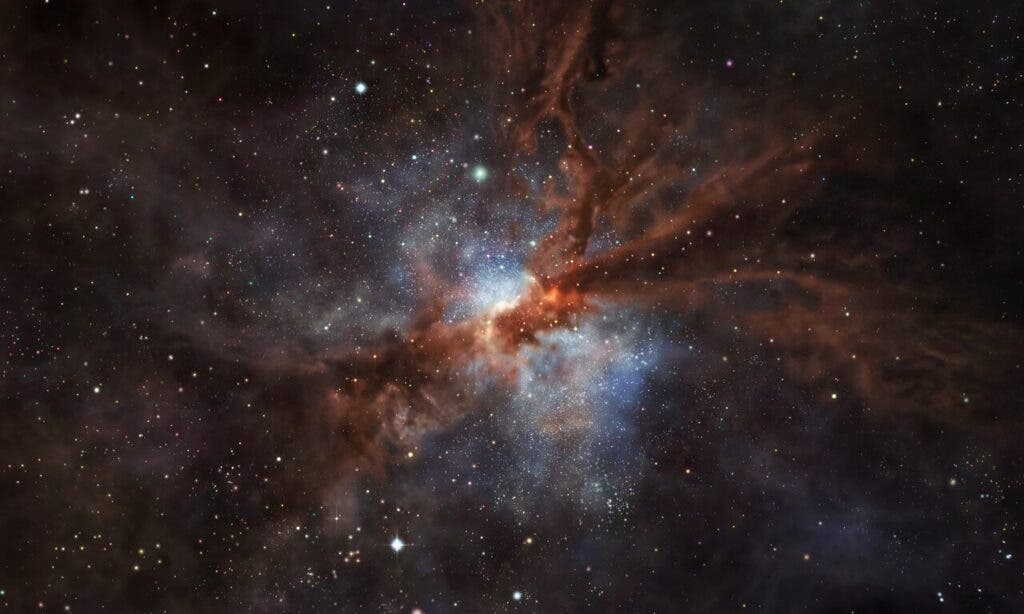An international team of astronomers reports on a new sighting of fluorine in another galaxy. This is the farthest the element has ever been detected and will help us better understand the stellar processes that lead to its creation.

Fluorine is the lightest chemical element in the halogen group, which it shares with other gases such as chlorine. It’s a very reactive element, and in our bodies, it helps give our bones and teeth mechanical strength as fluoride.
New research is helping us understand how this element is formed inside stellar bodies. The study also marks the farthest this element has ever been detected from our galaxy.
From stars to pearly whites
“We all know about fluorine because the toothpaste we use every day contains it in the form of fluoride,” says Maximilien Franco from the University of Hertfordshire in the UK, who led the new study.
“We have shown that Wolf–Rayet stars, which are among the most massive stars known and can explode violently as they reach the end of their lives, help us, in a way, to maintain good dental health!” he adds, jokingly.
The findings were made possible by a joint effort between the Atacama Large Millimeter/submillimeter Array (ALMA) and the European Southern Observatory (ESO), and pertain to a galaxy that’s 12 billion light-years away. The team identified fluorine in the form of hydrogen fluoride as large clouds of gas in the galaxy NGP-190387.
Due to the distance between Earth and NGP-190387, we still see it as it was at only 1.4 billion years old, around one-tenth of the estimated age of the Universe.
Like most of the chemical elements known to us, fluoride forms inside active stars. However, until now, we didn’t know the details of this process, or which stars produced the majority of the fluorine in the Universe.
This discovery helps us better understand how fluorine forms because stars expel chemical elements from their core near to or during the end of their lives. Due to the young age we perceive this galaxy as having from Earth, we can infer that the stars which formed the clouds of hydrogen fluoride must have appeared and died quickly in the grand scheme of things.
Wolf-Rayet stars, very large stellar bodies that only live for a few million years, are the main candidate that the team is considering. They fit the criteria of having short lives, and their size would allow for the huge quantities of hydrogen gas spotted in NGP-190387. Plus, it fits with our previous theories — Wolf-Rayet stars have been suggested as an important source of fluorine in the past, but we didn’t have enough data to confirm this theory, nor did we know how important they were for this process.
Although other processes have been suggested as likely sources of cosmic fluorine, the team believes that they couldn’t account for the time frame involved, nor for the sheer quantity of the element in NGP-190387.
“For this galaxy, it took just tens or hundreds of millions of years to have fluorine levels comparable to those found in stars in the Milky Way, which is 13.5 billion years old. This was a totally unexpected result,” says Chiaki Kobayashi, a professor at the University of Hertfordshire and co-author of the paper. “Our measurement adds a completely new constraint on the origin of fluorine, which has been studied for two decades.”
This is also the first time fluoride has been identified in such a far-away, star-forming galaxy. Since the distances involved in studying the Universe also mean that the further you look, the further back in time you see, it’s also the youngest star-forming galaxy we’ve ever detected fluoride in.
The paper “The ramp-up of interstellar medium enrichment at z > 4” has been published in the journal Nature Astronomy.









